3 March 2025
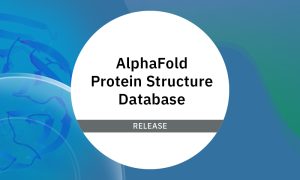
The AlphaFold Protein Structure Database (AFDB) now integrates The Encyclopedia of Domains (TED), a resource designed to systematically identify and classify structural domains within AlphaFold-predicted protein structures. TED provides domain boundaries for 365 million domains across more than one…
2025
updates-from-data-resources
24 February 2025

Yehudi Bloch, ARISE Fellow at EMBL Hamburg, talks about the snow flea antifreeze protein. This is part of a series of stories about EMBL scientists and quirky, charming proteins that make them smile.
PEOPLE & PERSPECTIVES
18 February 2025

Francesco talks about his work in protein science, fascination for protein design, and how he's finding the EMBL International PhD programme.
PEOPLE & PERSPECTIVES
2025
people-perspectivesperspectives
11 February 2025

Deepti Gupta, Project Manager and Database Curator at EMBL-EBI, talks about her favourite protein PIEZO1. This is part of a series of stories about EMBL scientists and quirky, charming proteins that make them smile.
PEOPLE & PERSPECTIVES
2025
people-perspectivesperspectives
29 January 2025

Researchers from Mainz University and EMBL Hamburg have presented a new approach for assessing the form of disordered proteins by using anomalous X-ray scattering method for structural analysis.
SCIENCE & TECHNOLOGY
20 January 2025
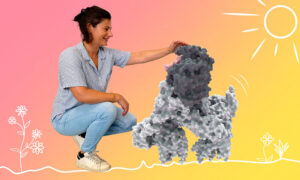
Sarah Gharbi, technician at EMBL Grenoble, talks about her favourite protein complex, which looks like a poodle. This is part of a series of stories about EMBL scientists and quirky, charming proteins that make them smile.
PEOPLE & PERSPECTIVES
7 January 2025

Maria Costanzo, former predoc at EMBL Barcelona, talks about YAP, her favourite protein in the shape of a heart. This is part of a series of stories about EMBL scientists and quirky, charming proteins that make them smile.
PEOPLE & PERSPECTIVES
16 December 2024
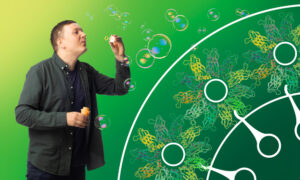
Veijo Salo, postdoc at EMBL Heidelberg, talks about seipin, the cell’s molecular ‘bubble blower’.
PEOPLE & PERSPECTIVES
27 November 2024
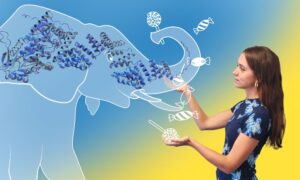
Sofia Rucli, postdoc at EMBL Rome, talks about her relationship with the protein OGT, a molecular ‘candy man’ of the cell.
PEOPLE & PERSPECTIVES
14 November 2024
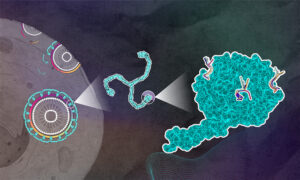
Scientists from EMBL Hamburg and CSSB have revealed key insights into the cellular process of clathrin-mediated endocytosis.
SCIENCE & TECHNOLOGY
9 October 2024
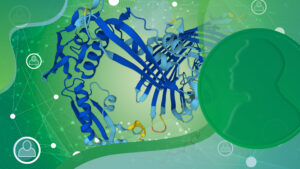
Creators of AI system AlphaFold receive 2024 Nobel Prize for Chemistry.
SCIENCE & TECHNOLOGY
2024
sciencescience-technology
12 September 2024

Traditional sequence search methods are fast and efficient but rely solely on comparing amino acid sequences. This approach can miss crucial insights because proteins with similar functions can have vastly different sequences. Although their sequences have diverged, these proteins often retain 3D…
2024
updates-from-data-resources
25 June 2024
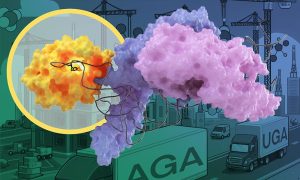
EMBL Grenoble’s Kowalinski Group analysed the structure of an enzyme responsible for modifying tRNA molecules to fine-tune protein production. They discovered that to distinguish almost identical, yet different, tRNA molecules, the enzyme uses help from another enzyme – a type of cooperation…
SCIENCE & TECHNOLOGY
19 June 2024
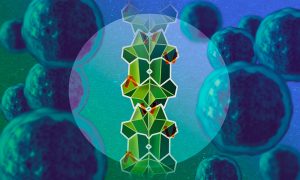
EMBL Hamburg scientists and collaborators discovered a new molecular mechanism in which an unstructured protein disables one of the main cancer-promoting proteins by gluing them into an elongated stack. Data from human patient samples support the role of this mechanism in prostate cancer…
SCIENCE & TECHNOLOGY
12 March 2024

Team Leader Sameer Velankar on why accessible training is key for AlphaFold and AI tools more generally.
PEOPLE & PERSPECTIVES
2024
people-perspectivesperspectivesscience
21 December 2023
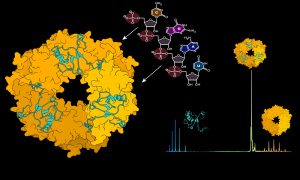
The Kosinski Group at EMBL Hamburg collaborated with other groups in Hamburg to reveal critical steps in Lassa virus ribonucleoparticle assembly and recruitment, and the crucial role played by RNA in in the Lassa virus life cycle.
SCIENCE & TECHNOLOGY
2023
sciencescience-technology
15 November 2023

Promiscuity is critical for nourishment. How? This question lies at the focus of research by the Löw Group at EMBL Hamburg. Using structural biology methods, they explore how specialised molecules located in the cell membrane allow cells absorb nutrients from their environment.
EMBLetc
1 November 2023
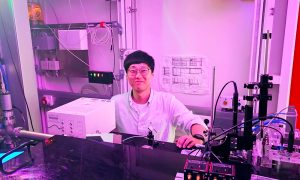
In this interview, Sihyun Sung, Postdoctoral Fellow at EMBL Hamburg, talks about making molecular movies with time-resolved serial X-ray crystallography, his sources of inspiration, and the value of forging deeper connections with friends and colleagues.
LAB MATTERSPEOPLE & PERSPECTIVES
2023
lab-matterspeople-perspectives
26 October 2023
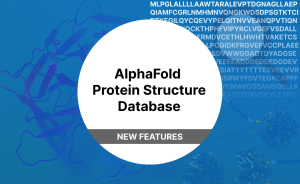
In response to user community demands, the AlphaFold Protein Structure database has introduced sequence-based search and cluster members.
2023
updates-from-data-resources
19 September 2023
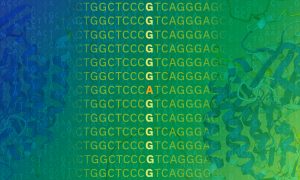
Ensembl Variant Effect Predictor integrates Google DeepMind’s new AlphaMissense Database for better predictions of genetic variant pathogenicity.
SCIENCE & TECHNOLOGY
2023
science-technologytechnology-and-innovation
3 July 2023
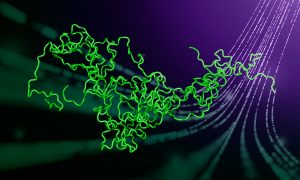
A third of all known proteins are either completely or partially unstructured. EMBL scientists contributed to a new set of guidelines – Minimum Information About a Disorder Experiment (MIADE) – that will help researchers share data on unstructured proteins in a more useful way and will enable…
SCIENCE & TECHNOLOGY
2023
sciencescience-technology
22 June 2023

The AlphaFold Database boasts improved user experience, including better search filters and an improved 3D viewer.
2023
updates-from-data-resources
7 June 2023

In recognition of Janet Thornton’s retirement, we look back at some of her biggest accomplishments shaping the field of bioinformatics.
LAB MATTERSPEOPLE & PERSPECTIVES
2023
announcementslab-matterspeople-perspectives
17 March 2023

EMBL-EBI's metagenomics data resource increases in size and supports groundbreaking AI tools for protein structure prediction.
2023
updates-from-data-resources
7 November 2022
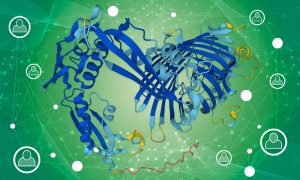
Researchers use social media to share findings on how useful AlphaFold predictions are for different applications.
2022
research-highlightsscience
23 September 2022

Cell biologist Anthony Hyman and DeepMind’s Demis Hassabis and John Jumper were announced among 25 Breakthrough Prize recipients
EMBL ANNOUNCEMENTSLAB MATTERS
2022
embl-announcementslab-matters
22 August 2022

Ewan Birney, Deputy Director General of EMBL and Director of EMBL-EBI, reveals the key factors that enabled AlphaFold to change the world of biology.
PEOPLE & PERSPECTIVES
2022
people-perspectivesperspectivesscience
28 July 2022
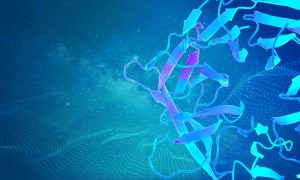
AlphaFold database offers a look at 3D protein universe.
SCIENCE & TECHNOLOGY
2022
sciencescience-technologytechnology-and-innovation
6 May 2022
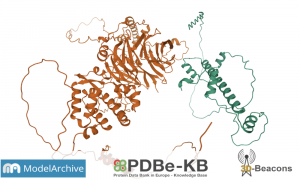
New dataset of predicted protein complexes accessible through 3D-Beacons Network.
2022
updates-from-data-resources
7 February 2022
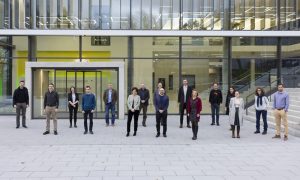
DeepMind visits EMBL Heidelberg to discuss current and future implications of Artificial Intelligence for life science research.
SCIENCE & TECHNOLOGY
2022
sciencescience-technology
1 February 2022

EMBL Hamburg’s Grzegorz Chojnowski from the Wilmanns Group developed software called findMySequence, which identifies proteins’ amino-acid sequences based on electron cryo-microscopy and X-ray crystallography data. It’s useful for identifying unknown proteins in samples from natural sources.
SCIENCE & TECHNOLOGY
2022
sciencescience-technology
28 January 2022

Latest AlphaFold database update adds 27 new organisms and almost 200,000 new protein structure predictions relevant to neglected tropical diseases and antimicrobial resistance
2022
updates-from-data-resources
17 December 2021
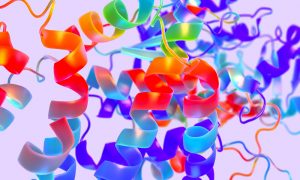
The systematic application of AI in life sciences as in the AlphaFold algorithm for predicting protein structures has been named '2021 Breakthrough of the Year' by Science magazine.
SCIENCE & TECHNOLOGY
2021
sciencescience-technology
3 November 2021
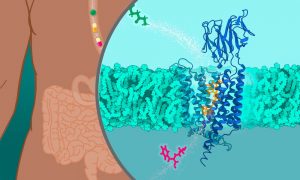
Scientists at EMBL Hamburg determined the molecular structure of Peptide Transporters 1 and 2. The findings will enable developing drugs that more efficiently pass from the gut to target tissues.
SCIENCE & TECHNOLOGY
2021
sciencescience-technology
15 October 2021
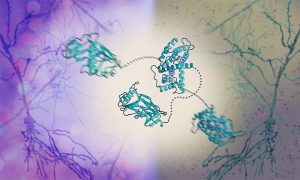
The Graham and Crump groups at the University of Cambridge and the Svergun Group at EMBL Hamburg have discovered a mechanism by which the herpes simplex virus takes control of the molecular machinery of human cells. Their work reveals how a dedicated viral protein hijacks key host proteins, forcing…
SCIENCE & TECHNOLOGY
2021
sciencescience-technology
6 October 2021
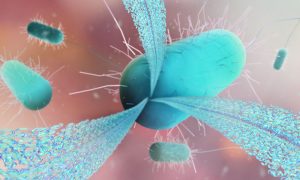
Structural biology provides insights into the diverse functions of fibrous protein in humans, amphibians, and bacteria.
SCIENCE & TECHNOLOGY
2021
sciencescience-technology
27 September 2021

Hundreds of school children explore the beauty of proteins through art
LAB MATTERS
16 September 2021
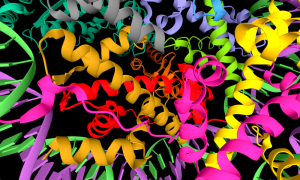
3D-Beacons Network acts as a one-stop shop for protein structures by combining and standardising data from several providers.
CONNECTIONS
30 August 2021
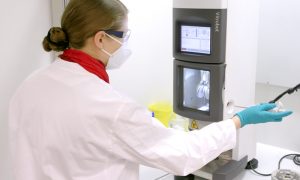
Giulia Zanetti from the Institute of Structural and Molecular Biology (ISMB) in London explains how the collaboration with the Cryo-Electron Microscopy Service Platform enabled her group to reveal the structure of protein transport complexes.
LAB MATTERSSCIENCE & TECHNOLOGY
2021
lab-mattersscience-technology
22 July 2021
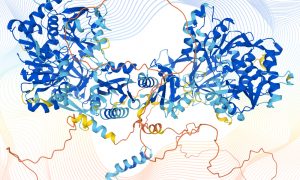
Partners use AlphaFold, the AI system recognised last year as a solution to the protein structure prediction problem, to release more than 350,000 protein structure predictions including the entire human proteome to the scientific community.
SCIENCE & TECHNOLOGY
2021
sciencescience-technology
22 July 2021
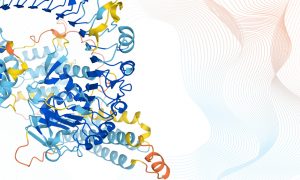
DeepMind and EMBL-EBI to make millions of protein structure predictions freely available to the scientific community.
SCIENCE & TECHNOLOGY
2021
sciencescience-technology
22 July 2021
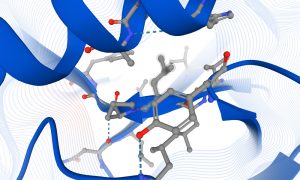
A discussion of the applications that AlphaFold DB may enable and the possible impact of the resource on science and society.
SCIENCE & TECHNOLOGY
2021
sciencescience-technology
17 May 2021
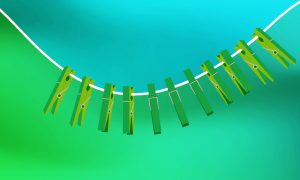
Researchers at EMBL Hamburg reveal how peg-like proteins clasp and reshape the cell membrane
SCIENCE & TECHNOLOGY
2021
sciencescience-technology
20 April 2021
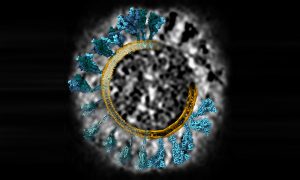
What does coronavirus’s spike protein look like in 3D? EMBL scientists and colleagues used cryo-electron tomography and molecular dynamics simulations to find out.
SCIENCE & TECHNOLOGY
2021
picture-of-the-weekscience-technology
No results found








































